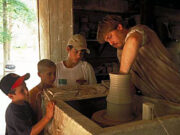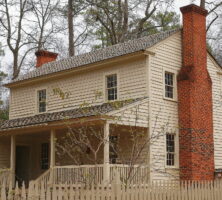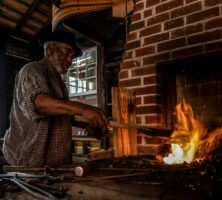Georgia offers a diverse group of living history museums, which are museums that offer a three-dimensional pilgrimage into a particular historical era.
Since Colonial Williamsburg in Virginia opened to the public in the 1930s, living history museums have become a popular and effective means to both educate and entertain the public. Buildings, artifacts, demonstrations, and hands-on activities, along with the assistance of costumed interpreters, combine to re-create for visitors the experience of a historical moment. Although all living history museums operate under a similar premise, each museum presents its own theory of how to bring the past to life.
History of Living History Museums
The first living history museum, Skansen, appeared in Sweden in 1891 and served as the archetype for those that later appeared in the United States. During the 1930s, American philanthropists John D. Rockefeller and Henry Ford used their prestige and wealth to preserve, reconstruct, and/or relocate historic buildings for both Colonial Williamsburg in Virginia and Greenfield Village in Michigan. The success of these two museums helped set the standard for heritage tourism today.
Soon after World War II (1941-45), curators took living history a step further by advancing the idea of living historical farms. With agriculture modernizing at a rapid pace in the early twentieth century, the purpose of such museums was to preserve disappearing farming methods and to promote the values associated with rural life. The movement grew over the next few decades, and in 1970 the Association for Living History, Farm and Agricultural Museums was formed.
During the 1960s and 1970s, historical scholarship began to focus on the lives of average people, a development that both encouraged and drew from the growing popularity of living history museums. Visitors to living history museums in previous decades witnessed only the lives of those at the top rungs of the social ladder. Colonial Williamsburg, for instance, focused on such prominent men as George Washington, Thomas Jefferson, and the royal governors. Since the 1970s, however, living history museums have striven to illuminate the lives of not only affluent citizens but also ordinary farmers, merchants, servants, and in the case of antebellum museums, enslaved people.
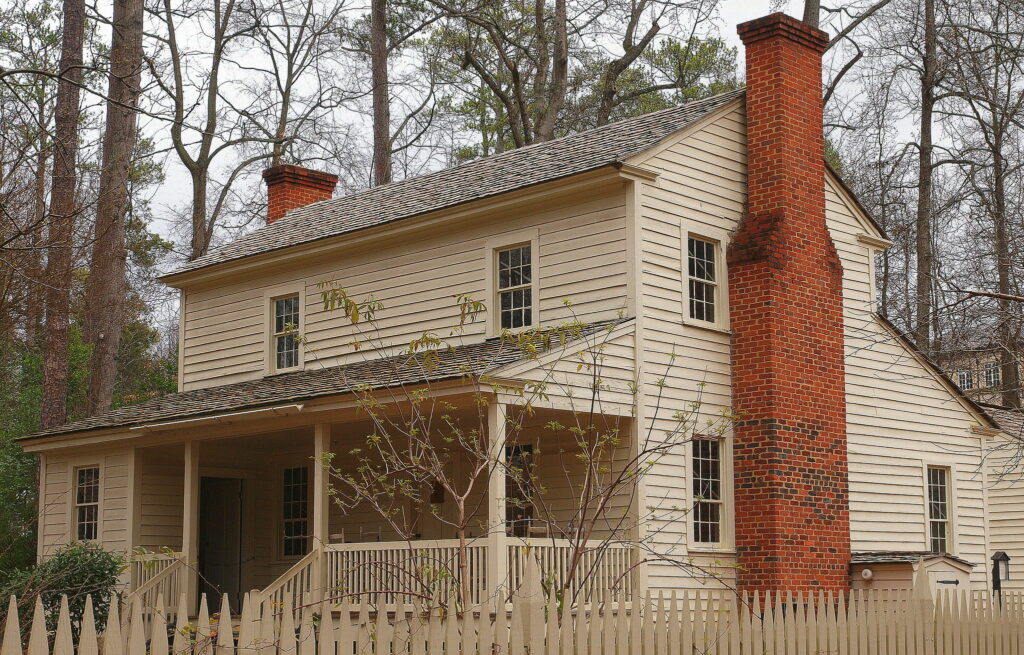
Today hundreds of living history museums across the United States actively promote the public’s understanding of history and historic preservation. Many offer workshops and special activities for school groups and educators. These museums often illustrate events and causality more effectively than a textbook and, by virtue of their entertainment value, draw in thousands of visitors who might not otherwise be interested in history.
Living History Museums in Georgia
Georgia Museum of Agriculture and Historic Village
Located in Tifton, the Georgia Museum of Agriculture and Historic Village (formerly the Georgia Agrirama), contains ninety-five acres of agricultural museum space dedicated to illustrating the history of the state’s wiregrass region from 1870 to 1910. More than thirty-five structures were relocated to the site, and costumed interpreters help bring south Georgia’s rural culture to life. Opened in 1976, the museum features an 1870s farm community, an 1890s progressive farmstead, a rural town, and such late-nineteenth-century industrial buildings as a gristmill, sawmill, and steam-powered cotton gin. Visitors can ride an 1890s logging train before roaming a fully stocked barnyard or catching a whiff of the turpentine still. The museum also provides workshops for students.
Historic Westville
One of Georgia’s premier living history museums, Westville first opened in 1970 near Lumpkin in Stewart County. It depicts an 1850s village, with rural businesses, a church, a school, and the Chattahoochee County Courthouse (ca. 1854), one of only two surviving wooden courthouses in the state. Westville has hosted several annual events, including a spring festival, an Independence Day celebration, and a Yuletide celebration, as well as numerous special events, including a reenactment of an 1836 battle between Creek Indians and white settlers, and vintage baseball games with the Westville Biscuits. In 2015 Westville closed in preparation for a move to nearby Columbus. The museum reopened to the public at its new home in 2019.
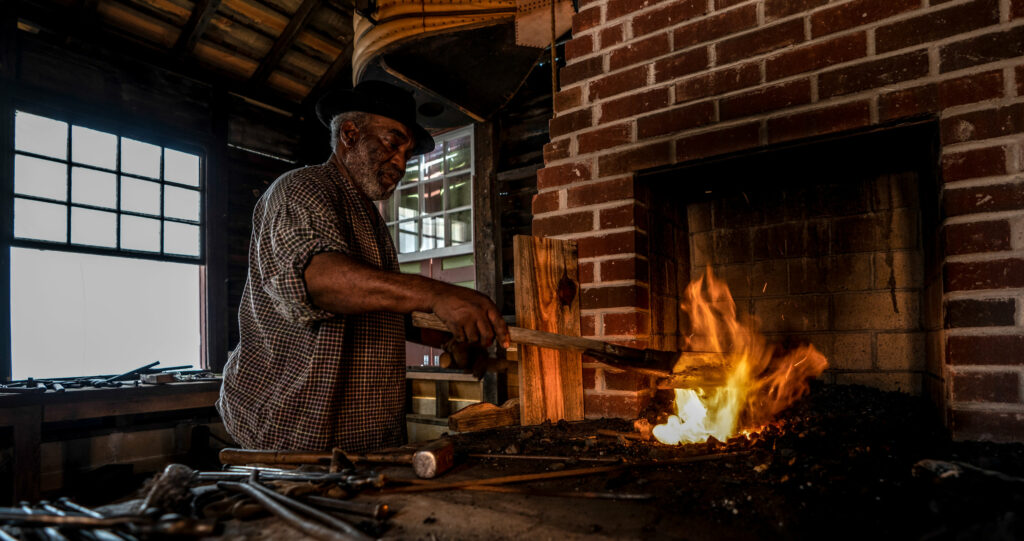
Shields-Ethridge Heritage Farm
The Shields-Ethridge Heritage Farm, located in Jefferson, in Jackson County, is an outdoor museum that seeks to use preservation and the natural environment to increase awareness and understanding of Georgia’s agricultural history. The farm, founded in 1799 by Joseph Shields of Virginia, has remained in the same family since its founding and has witnessed colossal changes in agriculture. Originally, the owners planted tobacco, then switched primarily to cotton in the mid-1800s. By the early 1900s the farm’s new owner, Ira W. Ethridge, transformed the landscape into a sharecropping village.
Listed on the National Register of Historic Places in 1992 and recognized as a Georgia Centennial Farm in 1994, the main agricultural complex contains buildings constructed between 1900 and 1945, each in its original location. Structures include a wheat house, teacher’s house, blacksmith shop, fully stocked commissary, barns, a 1930 Lummus cotton gin, and the recently restored Bachelors’ Academy, a two-room schoolhouse. Established in 1994 as a living history museum, the Shields-Ethridge Farm hosts an annual Mule Day celebration and provides tours for area children.
Seabrook Village
A true rarity among living history museums, Seabrook Village in Liberty County portrays a late-nineteenth- and early-twentieth-century coastal African American community. After the capture of Savannah during the Civil War (1861-65), Union general William T. Sherman issued Field Order No. 15, which confiscated land along the coast and redistributed it to newly freed Black families. Freedmen and-women forged new communities anchored by their culture, including the Geechee dialect and a common history of bondage. Established in 1990, Seabrook seeks to interpret rural African American life between 1865 and 1930 through authentic structures, exhibits, demonstrations, and oral history. Buildings include typical tenant houses, outbuildings, a school, a church, and a sorghum mill.
Tullie Smith Farm
The Tullie Smith Farm, part of the Atlanta History Center, retains its historical appearance and illustrates the lives of Georgia yeoman farmers. The 1840s farmhouse survived Union general William T. Sherman’s occupation of Atlanta during the Civil War. Featuring such traditional outbuildings as a blacksmith shop, smokehouse, and double corncrib, the rural yard comes to life with animals, costumed interpreters, and such crafts as candle making, spinning, and blacksmithing.


